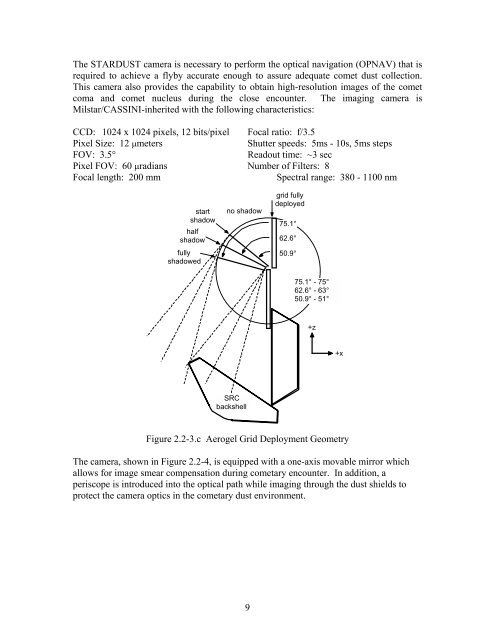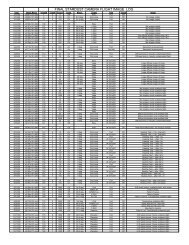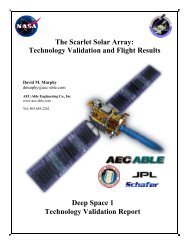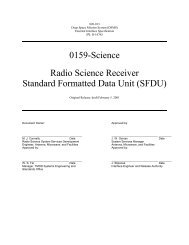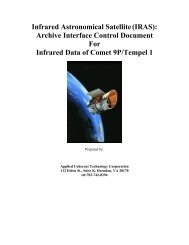MISSION PLAN - PDS Small Bodies Node
MISSION PLAN - PDS Small Bodies Node
MISSION PLAN - PDS Small Bodies Node
You also want an ePaper? Increase the reach of your titles
YUMPU automatically turns print PDFs into web optimized ePapers that Google loves.
The STARDUST camera is necessary to perform the optical navigation (OPNAV) that is<br />
required to achieve a flyby accurate enough to assure adequate comet dust collection.<br />
This camera also provides the capability to obtain high-resolution images of the comet<br />
coma and comet nucleus during the close encounter. The imaging camera is<br />
Milstar/CASSINI-inherited with the following characteristics:<br />
CCD: 1024 x 1024 pixels, 12 bits/pixel Focal ratio: f/3.5<br />
Pixel Size: 12 µmeters<br />
Shutter speeds: 5ms - 10s, 5ms steps<br />
FOV: 3.5°<br />
Readout time: ~3 sec<br />
Pixel FOV: 60 µradians Number of Filters: 8<br />
Focal length: 200 mm<br />
Spectral range: 380 - 1100 nm<br />
start<br />
shadow<br />
half<br />
shadow<br />
fully<br />
shadowed<br />
no shadow<br />
grid fully<br />
deployed<br />
75.1°<br />
62.6°<br />
50.9°<br />
75.1° - 75°<br />
62.6° - 63°<br />
50.9° - 51°<br />
+z<br />
+x<br />
SRC<br />
backshell<br />
Figure 2.2-3.c Aerogel Grid Deployment Geometry<br />
The camera, shown in Figure 2.2-4, is equipped with a one-axis movable mirror which<br />
allows for image smear compensation during cometary encounter. In addition, a<br />
periscope is introduced into the optical path while imaging through the dust shields to<br />
protect the camera optics in the cometary dust environment.<br />
9


